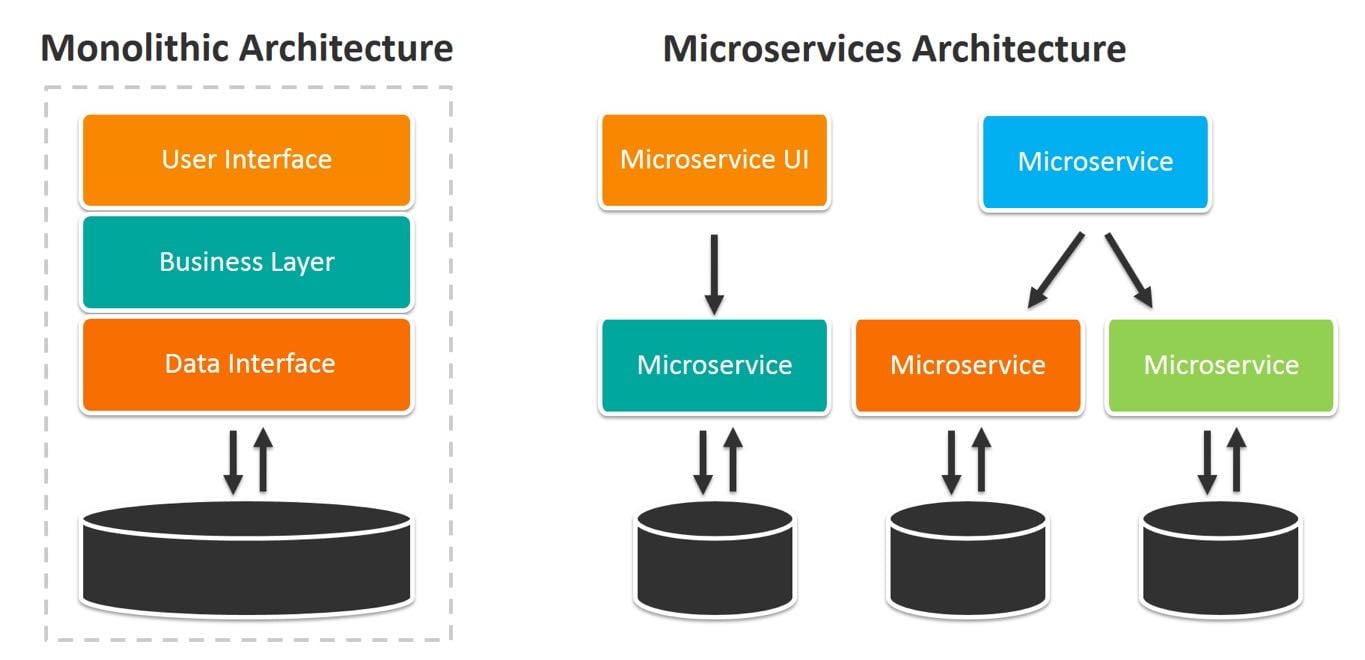Monolithic vs. Microservices: Choosing Your Software Architecture Path
 Abhinav Singh
Abhinav Singh
Welcome, fellow adventurers, to a deep dive into the captivating realm of software architecture. In this odyssey, we shall embark on a journey through the contrasting landscapes of Monolithic and Microservices architectures, charting their course through the turbulent waters of scalability, maintenance, and development agility. Armed with vivid examples drawn from the realms of e-commerce and social media, we shall unravel the intricacies of these architectural paradigms and unearth the treasures they hold for software engineers and architects alike.

Understanding Monolithic Architecture
Defining Monolithic Architecture
At the heart of the Monolithic architecture lies a cohesive, tightly integrated system where all components of an application are bundled together within a single codebase. This traditional approach, reminiscent of a colossal fortress, boasts simplicity and familiarity, making it a stalwart choice for many software projects.
Illustrating Monolithic Architecture: The E-commerce Paradigm
Imagine, if you will, a bustling online marketplace—a quintessential embodiment of Monolithic architecture. Here, every facet of the shopping experience, from browsing products to processing payments, resides within a monolithic monolith of code. It's akin to navigating a vast department store, where everything, from clothing to electronics, is housed under one roof.
Pros and Cons of Monolithic Architecture
Pros:
Simplicity in Development: With all components tightly integrated, Monolithic architecture simplifies the development process, allowing developers to focus on building features rather than managing complex infrastructure.
Ease of Deployment and Management: Deploying a Monolithic application involves shipping a single package, streamlining the deployment process and minimizing operational overhead.
Unified Codebase: A single codebase fosters cohesion among developers, facilitating collaboration and knowledge sharing within the development team.
Cons:
Scalability Challenges: As the application grows in size and complexity, Monolithic architectures may struggle to scale efficiently, leading to performance bottlenecks and diminished responsiveness.
Longer Development Cycles: Changes or updates to the system often require modifying the entire codebase, leading to longer development cycles and increased risk of introducing bugs or regressions.
Difficulty in Technology Stack Upgrades: Upgrading underlying technologies or frameworks becomes challenging, as it necessitates overhauling the entire monolith, potentially disrupting the stability of the application.
Demystifying Microservices Architecture
Unveiling Microservices Architecture
In stark contrast to its monolithic counterpart, Microservices architecture embodies a modular, decentralized approach to software development. Here, applications are decomposed into a constellation of independent, loosely coupled services, each responsible for a specific business function.
Exemplifying Microservices Architecture: The Social Media Spectrum
Consider, for a moment, the sprawling landscape of a social media platform—a prime exemplar of Microservices architecture. Here, functionalities such as user management, news feed aggregation, messaging, and notifications exist as discrete, self-contained services, interconnected via APIs. It's akin to a bustling metropolis, where diverse services coexist harmoniously, each contributing to the overall ecosystem.
Pros and Cons of Microservices Architecture
Pros:
Enhanced Scalability and Flexibility: Microservices architecture enables granular scalability, allowing individual services to be scaled independently based on demand, thereby enhancing the overall flexibility and responsiveness of the system.
Independent Development and Deployment: With services decoupled from one another, teams can develop, deploy, and iterate on individual services autonomously, fostering agility and accelerating time-to-market.
Fault Isolation and Resilience: Faults or failures in one service are isolated from others, preventing cascading failures and enhancing the overall resilience of the system.
Cons:
Complexity in Managing Distributed Systems: Operating a Microservices architecture introduces complexities in managing a distributed system, including service discovery, communication protocols, and data consistency across services.
Overhead of Inter-Service Communication: Interactions between services incur overhead in terms of network latency and communication protocols, necessitating robust infrastructure and monitoring mechanisms.
Increased Operational Complexity: Managing a multitude of services requires sophisticated orchestration and monitoring tools, adding to the operational overhead and infrastructure costs.
Bridging the Divide: Comparing Monolithic and Microservices Architectures
Having traversed the landscapes of Monolithic and Microservices architectures, let us now compare and contrast these two paradigms, illuminating their respective strengths and weaknesses.
Scalability and Flexibility
In terms of scalability, Microservices architecture emerges as the clear victor, offering granular scalability and flexibility. Each service can be scaled independently, allowing organizations to allocate resources precisely where they are needed most. Monolithic architectures, by contrast, often struggle with scalability, as the entire application must be scaled as a single unit, leading to inefficiencies and resource wastage.
Development Agility and Deployment Velocity
Microservices architecture shines in terms of development agility and deployment velocity. With services decoupled and teams empowered to work independently, organizations can iterate rapidly and respond to changing requirements with agility. Monolithic architectures, on the other hand, suffer from longer development cycles and deployment lead times, as changes to the system require modifications to the entire codebase.
Operational Complexity and Maintenance Overhead
However, Microservices architecture introduces a higher degree of operational complexity and maintenance overhead. Managing a constellation of services, each with its own infrastructure and dependencies, requires sophisticated orchestration and monitoring tools. Monolithic architectures, by contrast, boast simplicity in terms of operations and maintenance, as there is only one codebase to manage.
Resilience and Fault Isolation
When it comes to resilience and fault isolation, Microservices architecture offers inherent advantages. Failures or faults in one service are contained and isolated from others, preventing cascading failures and enhancing the overall resilience of the system. Monolithic architectures, by contrast, are more susceptible to system-wide failures, as a fault in one component can impact the entire application.
Choosing the Right Path: Considerations and Trade-offs
In navigating the complex terrain of software architecture, organizations must carefully weigh the considerations and trade-offs associated with Monolithic and Microservices architectures.
Project Requirements and Constraints
The choice between Monolithic and Microservices architectures hinges on project requirements and constraints. For smaller projects with limited scalability needs, Monolithic architecture may offer simplicity and ease of development. Conversely, for larger projects with stringent scalability and agility requirements, Microservices architecture may be the preferred choice.
Team Expertise and Organizational Culture
Organizations must also consider their team's expertise and organizational culture. Monolithic architectures may be more suitable for teams accustomed to traditional development practices, whereas Microservices architectures require a shift towards DevOps practices and a culture of autonomy and collaboration.
Long-term Scalability Goals
Finally, organizations must evaluate their long-term scalability goals. While Monolithic architectures may suffice for smaller projects in the short term, they may encounter scalability challenges as the application grows. In contrast, Microservices architectures offer scalability and flexibility, enabling organizations to adapt and grow with changing demands.
Conclusion: Navigating the Seas of Software Architecture
As we conclude our expedition through the realms of Monolithic and Microservices architectures, let us reflect on the diverse landscapes we have traversed and the insights gleaned along the way. Whether navigating the sturdy fortresses of Monolithic architectures or charting the agile waters of Microservices ecosystems, software architects and engineers must remain vigilant, adapting their strategies to meet the evolving needs of their projects and organizations.
In the ever-changing landscape of software development, there is no one-size-fits-all solution. Instead, it is through thoughtful consideration of project requirements, team dynamics, and long-term scalability goals that organizations can chart a course toward success, navigating the seas of software architecture with confidence and clarity.
Subscribe to my newsletter
Read articles from Abhinav Singh directly inside your inbox. Subscribe to the newsletter, and don't miss out.
Written by
